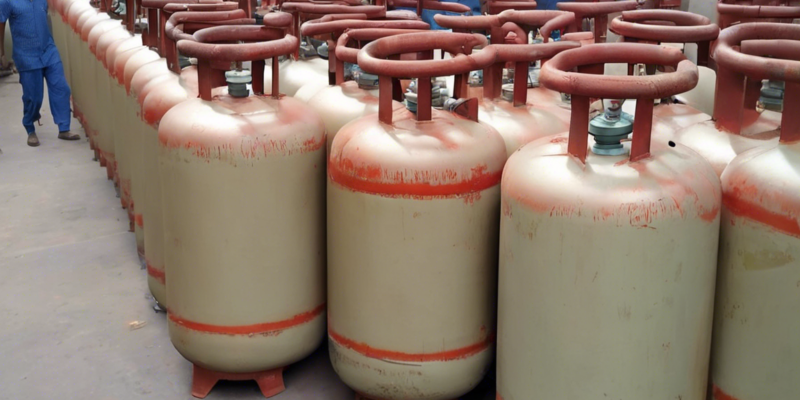LPG (liquefied petroleum gas) has become an essential source of energy for households and businesses around the world. It is a versatile and clean-burning fuel used for cooking, heating, and even powering vehicles. The pricing of LPG gas cylinders is a crucial aspect that impacts consumers and businesses alike. In this comprehensive guide, we will delve into the trends and factors influencing LPG gas cylinder prices.
Understanding LPG Gas Cylinder Pricing
LPG gas cylinder prices can vary significantly based on a variety of factors including global oil prices, supply and demand dynamics, government subsidies, transportation costs, taxes, and local regulations. The pricing mechanism for LPG cylinders is often complex and subject to frequent changes. In many countries, governments regulate LPG prices to ensure affordability for consumers while balancing the commercial interests of suppliers.
Factors Influencing LPG Gas Cylinder Prices
-
Global Oil Prices: Since LPG is derived from crude oil and natural gas, fluctuations in global oil prices have a direct impact on the cost of LPG production.
-
Supply and Demand: Like any commodity, LPG prices are influenced by supply and demand dynamics. A shortage of LPG supply or an increase in demand can lead to higher prices.
-
Transportation Costs: The cost of transporting LPG cylinders from refineries or import terminals to distribution centers and ultimately to consumers can impact prices.
-
Taxes and Duties: Governments impose various taxes, duties, and levies on LPG cylinders, which can significantly contribute to the final price paid by consumers.
-
Currency Exchange Rates: Fluctuations in currency exchange rates can also affect LPG prices, especially in countries that import a significant portion of their LPG requirements.
-
Subsidies and Government Regulations: Many governments provide subsidies to consumers to keep LPG prices stable and affordable. Changes in subsidy policies can impact the final price of LPG cylinders.
Understanding Price Trends in LPG Gas Cylinders
LPG gas cylinder prices are subject to fluctuations over time. Understanding price trends can help consumers and businesses make informed decisions and plan their budgets effectively. Here are some key insights into price trends in LPG gas cylinders:
Historical Price Trends: Over the years, LPG prices have shown both upward and downward trends, often in response to changes in global oil prices, supply disruptions, and geopolitical events. Tracking historical price trends can provide valuable insights into future pricing scenarios.
Seasonal Variations: LPG demand often fluctuates seasonally, leading to price variations throughout the year. For example, during winter months, when heating requirements increase, the demand for LPG cylinders typically rises, leading to potential price increases.
Government Interventions: Government policies play a significant role in LPG gas cylinder prices. Subsidies, price controls, and regulatory changes can all impact the pricing of LPG cylinders. Keeping abreast of government interventions is key to understanding price trends.
Consumer Awareness: With the advent of digital platforms and mobile apps, consumers now have easier access to real-time price information for LPG cylinders. Staying informed about LPG gas cylinder prices can help consumers make smart choices and potentially save on fuel costs.
Tips for Managing LPG Gas Cylinder Costs
-
Regular Maintenance: Proper maintenance of LPG appliances can help improve fuel efficiency and reduce overall consumption, thereby saving costs in the long run.
-
Bulk Purchases: Buying LPG cylinders in bulk quantities can often lead to discounts or cost savings. Check with your supplier for bulk purchase options.
-
Comparison Shopping: Explore different LPG suppliers and compare prices to ensure you are getting the best deal. Loyalty programs and promotional offers can also help save on costs.
-
Energy-Efficient Appliances: Investing in energy-efficient LPG appliances can help lower gas consumption and reduce overall expenses on LPG cylinders.
-
Opt for Auto-Delivery: Enroll in auto-delivery services offered by LPG suppliers to ensure timely refills and potentially avail of discounts or incentives.
Frequently Asked Questions (FAQs) About LPG Gas Cylinder Prices
Q1: What is the typical lifespan of an LPG gas cylinder?
A: The lifespan of an LPG gas cylinder is typically around 15-20 years, subject to regular inspections and maintenance.
Q2: Can I switch LPG suppliers to get a better price?
A: Yes, consumers have the choice to switch LPG suppliers if they find a better price or service elsewhere.
Q3: How often do LPG gas prices change?
A: LPG prices can change frequently, with some countries updating prices monthly or even more frequently based on market conditions.
Q4: Are there any subsidies available for LPG consumers?
A: Many governments provide subsidies or assistance programs to make LPG cylinders more affordable for consumers, especially in low-income households.
Q5: How can I check the current price of LPG gas cylinders in my area?
A: You can check LPG gas cylinder prices through online platforms, mobile apps, or by contacting local LPG suppliers for up-to-date pricing information.
In conclusion, LPG gas cylinder prices are influenced by a range of factors, from global oil prices to government policies and consumer demand. By understanding price trends, consumers and businesses can navigate the market effectively, make informed decisions, and potentially save on fuel costs. Stay informed, compare prices, and consider energy-efficient options to manage LPG gas cylinder expenses efficiently.




Comments